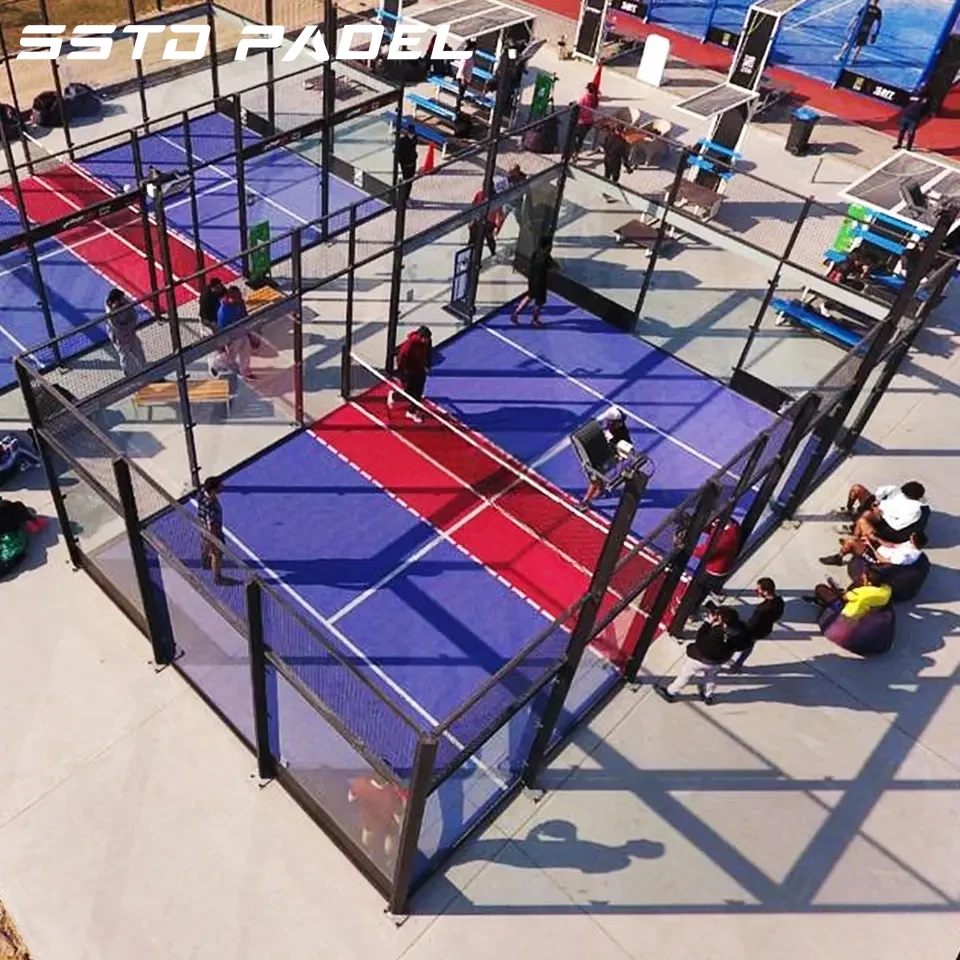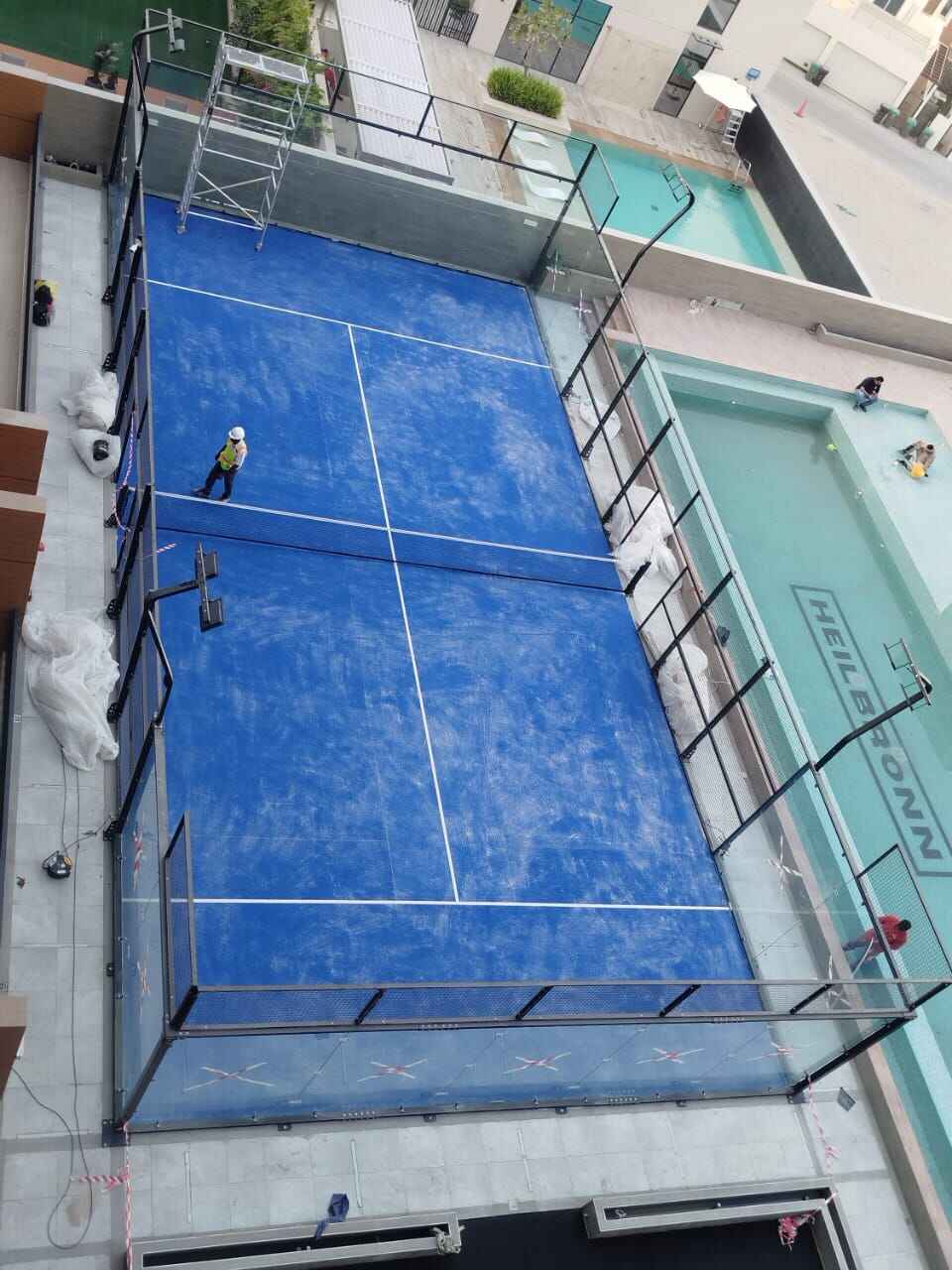The growing popularity of padbol has created significant demand for specialized court installations across various environments. Whether planning a commercial facility or private installation, understanding the fundamental differences between indoor and outdoor padbol court setups is crucial for making informed decisions. Each configuration presents unique advantages and considerations that directly impact player experience, maintenance requirements, and long-term operational costs.

Modern padbol facilities require careful planning to optimize both functionality and player satisfaction. The choice between indoor and outdoor installations affects everything from structural engineering to surface materials, lighting systems, and climate control considerations. Professional facility managers increasingly recognize that successful padbol court implementation depends on thorough analysis of environmental factors, usage patterns, and operational objectives.
Environmental Considerations for Court Placement
Climate Impact on Court Performance
Weather conditions significantly influence padbol court functionality and player experience. Outdoor installations must withstand temperature fluctuations, precipitation, wind patterns, and UV exposure that can affect both surface integrity and equipment longevity. Professional-grade outdoor courts incorporate weather-resistant materials and drainage systems designed to maintain optimal playing conditions throughout various seasons.
Indoor environments provide controlled conditions that eliminate weather-related disruptions while enabling year-round operation. Climate control systems maintain consistent temperature and humidity levels, protecting court surfaces and ensuring predictable ball behavior. This controlled environment particularly benefits competitive play where consistency becomes paramount for fair gameplay.
Regional climate variations determine the feasibility and cost-effectiveness of different installation approaches. Areas with harsh winters or extreme weather patterns often favor indoor solutions, while temperate climates may support outdoor installations with appropriate weatherproofing measures.
Structural Requirements and Foundation Systems
Foundation requirements differ substantially between indoor and outdoor padbol court installations. Outdoor courts require robust drainage systems, frost-resistant foundations, and expansion joints to accommodate thermal movement. These systems must handle groundwater management, surface runoff, and seasonal soil movement while maintaining level playing surfaces.
Indoor installations typically utilize existing building foundations with specialized subflooring systems that provide proper shock absorption and ball bounce characteristics. These controlled environments allow for precision leveling and specialized surface treatments that optimize gameplay without weatherproofing concerns.
Engineering considerations include load-bearing requirements for enclosure structures, lighting systems, and spectator areas. Professional installations require detailed soil analysis, structural calculations, and compliance with local building codes specific to recreational facilities.
Surface Materials and Playing Characteristics
Outdoor Surface Technologies
Outdoor padbol court surfaces must balance durability with optimal playing characteristics while resisting weather damage. Modern synthetic materials incorporate UV stabilizers, antimicrobial treatments, and slip-resistant textures that maintain performance standards across varying weather conditions. These surfaces require periodic maintenance but offer excellent longevity when properly installed.
Drainage integration becomes critical for outdoor installations, with specialized surface treatments that prevent water accumulation while maintaining proper ball bounce characteristics. Advanced materials incorporate porous elements that allow moisture evacuation without compromising surface integrity or player safety.
Color selection for outdoor courts considers heat absorption, glare reduction, and visibility optimization. Professional installations often specify lighter colors that reflect heat and reduce surface temperatures during peak sun exposure periods.
Indoor Surface Specifications
Indoor padbol court surfaces prioritize consistency and precision over weather resistance. Specialized materials provide optimal shock absorption, ball response, and player comfort without requiring weatherproofing additives. These surfaces often incorporate advanced cushioning systems that reduce joint stress and enhance player performance.
Controlled indoor environments enable use of premium materials that might not withstand outdoor exposure. These specialized surfaces offer superior ball control, consistent bounce characteristics, and enhanced player safety through advanced grip technologies and impact absorption systems.
Maintenance requirements for indoor surfaces focus on cleaning protocols, periodic refinishing, and protection from equipment damage rather than weather-related deterioration. This typically results in longer surface life and more predictable replacement schedules.
Lighting and Visibility Systems
Outdoor Lighting Challenges
Outdoor padbol court lighting must overcome natural light variations, weather interference, and energy efficiency concerns. Professional installations utilize LED systems with appropriate light distribution patterns that minimize shadows and glare while providing consistent illumination across the entire playing surface. These systems require weatherproof fixtures and robust electrical infrastructure.
Light pollution considerations affect outdoor installations in urban environments, requiring careful fixture selection and shielding to minimize impact on surrounding properties. Advanced control systems enable dimming capabilities and scheduling features that optimize energy consumption while maintaining safety standards.
Backup power systems become crucial for outdoor facilities that operate during evening hours, ensuring player safety and operational continuity during power disruptions. Solar integration increasingly provides sustainable solutions for remote outdoor installations.
Indoor Lighting Optimization
Indoor lighting systems provide precise control over illumination levels, color temperature, and distribution patterns without weather interference. Professional installations specify lighting that eliminates shadows, reduces eye strain, and enhances ball visibility throughout all playing areas. These systems integrate with building automation for efficient operation and maintenance scheduling.
Emergency lighting systems ensure player safety during power outages while meeting building code requirements for egress illumination. Advanced LED systems provide instant-on capabilities and dimming features that support various activities from casual play to professional tournaments.
Glare control becomes more manageable in indoor environments through strategic fixture placement and architectural features that diffuse light effectively. Ceiling height and structure design directly influence lighting performance and installation complexity.
Enclosure Systems and Player Protection
Outdoor Enclosure Design
Outdoor padbol court enclosures must withstand wind loads, temperature extremes, and precipitation while maintaining structural integrity and player safety. Professional-grade glass panels incorporate tempered or laminated materials with appropriate thickness specifications for local wind conditions and safety requirements. Frame systems utilize corrosion-resistant materials designed for extended outdoor exposure.
Ventilation considerations prevent condensation buildup and maintain air circulation without compromising weather protection. Strategic opening placement enables airflow while preventing rain infiltration and maintaining optimal playing conditions during various weather scenarios.
Maintenance access and panel replacement procedures require careful planning for outdoor installations where weather conditions may limit service opportunities. Modular designs facilitate repairs and upgrades while maintaining court availability for users.
Indoor Enclosure Specifications
Indoor padbol court enclosures integrate with building systems while providing necessary ball containment and player safety. Glass specifications focus on impact resistance and optical clarity without requiring weather resistance properties. This enables use of thinner panels and more economical framing systems while maintaining safety standards.
Acoustic considerations become more critical in indoor environments where sound transmission affects adjacent areas. Specialized glass and frame systems incorporate sound dampening features that minimize noise while maintaining visual connectivity with surrounding spaces.
Integration with building HVAC systems requires coordination of air handling, temperature control, and humidity management to prevent condensation and maintain optimal playing conditions. Professional installations specify appropriate clearances and access points for mechanical systems.
Maintenance and Operational Considerations
Outdoor Court Maintenance Requirements
Outdoor padbol court maintenance involves regular cleaning, surface inspection, drainage system maintenance, and weather damage assessment. Professional maintenance schedules account for seasonal variations, heavy usage periods, and preventive measures that extend surface life and maintain safety standards.
Equipment storage and maintenance access require weatherproof facilities and appropriate security measures. Outdoor installations benefit from covered maintenance areas and tool storage that protect equipment while providing convenient access for regular upkeep activities.
Seasonal preparation procedures include winterization protocols, spring startup procedures, and storm damage assessment systems. Professional facilities develop comprehensive maintenance programs that address both routine upkeep and emergency response requirements.
Indoor Maintenance Protocols
Indoor padbol court maintenance focuses on surface cleaning, HVAC system coordination, and facility integration rather than weather-related concerns. Controlled environments enable more predictable maintenance schedules and specialized cleaning procedures that optimize surface performance and appearance.
Air quality management requires coordination with building ventilation systems to maintain appropriate circulation and prevent humidity-related issues. Professional facilities implement monitoring systems that track environmental conditions and adjust building systems accordingly.
Integrated facility management enables coordination between court maintenance and other building systems, creating operational efficiencies and reducing overall maintenance costs through shared resources and scheduling optimization.
Cost Analysis and Investment Considerations
Initial Installation Costs
Outdoor padbol court installations typically require higher initial investment in foundation systems, drainage infrastructure, and weather-resistant materials. However, these installations avoid building construction costs and may qualify for different financing options based on outdoor recreational facility classifications.
Indoor installations require coordination with building construction or renovation projects, adding complexity but potentially reducing overall project costs through integrated design approaches. Mechanical system integration and structural modifications represent significant cost factors that require detailed engineering analysis.
Professional installations benefit from comprehensive cost analysis that includes site preparation, utility connections, permit requirements, and long-term operational considerations. Value engineering approaches optimize specifications while maintaining quality and performance standards.
Long-term Operational Economics
Operating costs differ significantly between indoor and outdoor installations based on energy consumption, maintenance requirements, and usage patterns. Indoor facilities typically show higher energy costs but lower maintenance expenses and more consistent revenue generation through year-round operation.
Revenue optimization strategies consider seasonal variations, weather impact on usage, and market demand patterns specific to each installation type. Professional facility operators develop business models that maximize return on investment while maintaining high-quality player experiences.
Insurance considerations and liability factors vary between installation types, affecting overall operational costs and risk management strategies. Professional installations require comprehensive coverage that addresses specific risks associated with each environment type.
FAQ
What are the main differences in construction costs between indoor and outdoor padbol courts
Construction costs vary significantly based on site conditions, local climate, and facility requirements. Outdoor installations typically require more expensive foundation and drainage systems but avoid building construction costs. Indoor installations need coordination with building systems and climate control but may benefit from shared infrastructure costs. Professional cost analysis should include site preparation, utilities, permits, and long-term operational expenses to determine the most economical approach for specific situations.
How do weather conditions affect outdoor padbol court performance and maintenance
Weather significantly impacts outdoor court performance through temperature effects on ball behavior, surface traction changes from moisture, and wind interference with gameplay. Maintenance requirements increase with outdoor installations due to debris accumulation, surface weathering, and seasonal preparation needs. Professional outdoor courts incorporate weather-resistant materials and drainage systems designed to minimize weather impact while maintaining consistent playing conditions throughout various seasons.
What are the advantages of indoor padbol court installations for commercial facilities
Indoor installations provide year-round operation capability, controlled environmental conditions, and protection from weather-related cancellations that maximize revenue potential. Climate control systems ensure consistent playing conditions and surface performance while reducing maintenance requirements compared to outdoor installations. Integration with existing building systems and multi-use facility designs create operational efficiencies and enhanced customer amenities that support business success.
How do lighting and visibility requirements differ between indoor and outdoor padbol courts
Outdoor courts require more robust lighting systems to overcome natural light variations and weather interference, typically using weatherproof LED fixtures with higher power ratings and backup systems. Indoor installations provide precise lighting control without weather concerns, enabling optimized illumination levels and energy-efficient operation through building automation integration. Both environments require proper light distribution to eliminate shadows and glare while meeting safety standards for competitive play.
Table of Contents
- Environmental Considerations for Court Placement
- Surface Materials and Playing Characteristics
- Lighting and Visibility Systems
- Enclosure Systems and Player Protection
- Maintenance and Operational Considerations
- Cost Analysis and Investment Considerations
-
FAQ
- What are the main differences in construction costs between indoor and outdoor padbol courts
- How do weather conditions affect outdoor padbol court performance and maintenance
- What are the advantages of indoor padbol court installations for commercial facilities
- How do lighting and visibility requirements differ between indoor and outdoor padbol courts

